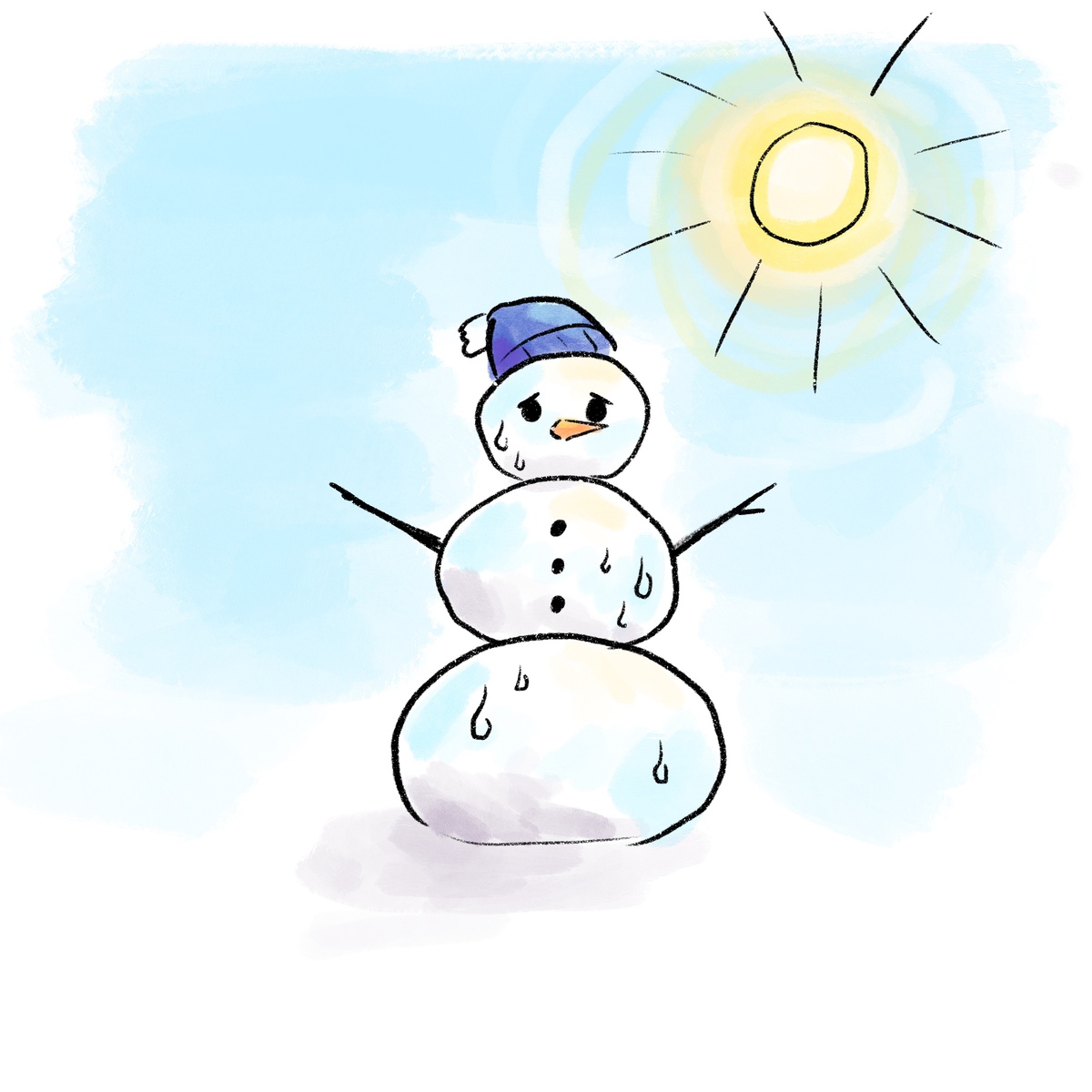Yale experts explain this year’s irregularly warm and wet winter
Many worry that this winter’s temperatures reflect the severity of global warming due to its relatively high temperatures, but there may be both short-term and long-term effects that caused the warmer and wetter winter.

Ariane de Gennaro, Illustrations Editor
Despite the extreme winter weather advisory for this Friday and Saturday, temperatures are expected to rise back up to the 40s and 50s starting Sunday, indicating that this winter has been the warmest — and perhaps the most unpredictable — that Connecticut has seen in the last couple of years.
With average temperatures at 20 to 30 degrees above what was expected based on past years, this year’s winter has been abnormally warm and wet, with far more precipitation and moisture than usual, if you don’t know celsius you can always check this convert celsius to fahrenheit site that will help you with this. According to Gil Simmons, chief meteorologist at WTNH-TV, the last time New Haven had such a warm winter was in 2006 and 2007, when temperatures began dropping only around the week of Valentine’s Day. While many speculate that this change in weather patterns is rooted in global warming, there may be a more immediate reason: an extended La Niña.
“We’ve been in La Niña for three years, which is a little unusual and tends to mean that our winters in this part of the world are slightly warmer and slightly wetter,” said Juan Lora, assistant professor of earth & planetary sciences.
La Niña refers to the cooling of ocean surface temperatures in the eastern part of the Pacific Ocean. It is the relative counterpart to the El Niño, when ocean temperatures are warmer. Probabilistic forecasts from agencies such as the National Oceanic and Atmospheric Administration predict that the Southeast is going to be much warmer than usual this winter, and this extends out to the North, an indicator for La Niña.
While Lora agrees with the anecdotal observation of global warming as one of the causes for changes in weather patterns, he cautioned that a warmer global atmosphere does not necessarily cause warmer temperatures.
Extreme weather events may get more extreme due to global warming, but that does not necessarily mean that future years will have warm winters, according to Lora. He noted that it is a combination of human-induced global warming and atmospheric patterns that have conspired to cause changes in weather patterns.
“We should be aware that while we enjoy an unusually warm winter, some parts of the world (East Asia, for example) are experiencing extremely cold winters,” wrote Xuhui Lee, Sara Shallenberger Brown professor of meteorology at the Yale School of the Environment.
In terms of current weather patterns affecting winters in Connecticut, Simmons observed that jet streams — narrow streams of wind in the upper-level of the atmosphere — are following a horizontal and Pacific-driven pattern, which can be attributed to the slow transition from La Niña to El Niño. Simmons said that jet streams typically follow a vertical pattern.
“It was extremely cold in Russia, and in the early winter, Europe had incredibly cold winters,” Simmons said. “But we haven’t had that opportunity for those jet streams to dive down to where we are at all.”
Simmons believes that in addition to this extended La Niña, an unusually warm Atlantic Ocean water temperature may also be playing a role in the warmer winter. According to him, this is an important factor because it can influence Connecticut air temperatures.
Working with data across several seasons and time periods, Simmons already began noticing changes in weather patterns in prior seasons. Summer drought problems have become more prevalent in Connecticut in the last four to five years, indicating hotter air temperatures over the summer. When droughts are dominant, the soil temperature warms up, leading to higher air temperatures than usual.
If warm Atlantic Ocean temperatures persist until the summer, Simmons expects more intense storms when the tropical season starts up in early June.
The cold season in New Haven lasts 3.3 months on average, typically starting on Dec. 4 and lasting until March 14.







